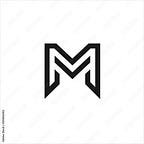A Deep Dive in the Supercomputer D-Wave
D-Wave is one of the most astronomical inventions in the history of computers. It is located in British Columbia, Canada. The company provides quantum computing solutions to potential clients. Google and Nasa are some of the significant users of this technology since 2013. Geordie Rose and Haig Farris are the masterminds behind this supercomputer.
Author Dan Brown references this supercomputer in his novel “Origins”. He, however, changed its name to “E-Wave” and some other information to add a dramatic effect to his bestseller novel. In this article, I will walk you through this technological wonder.
The main difference between quantum computing and traditional computing lies in bits. Whereas ordinary computers can store info by “0” or ‘1’, quantum computers store by “0”, “1”, and “0 and 1” simultaneously.
They can be ON, OFF or both at the same time due to events like superposition and entanglement. However, after the computations, the result is delivered in binary bits.
As multiple values can be returned, the users get the optimum solution. Besides, they can see the wide range of other probable solutions from which the solution was picked. Quantum computers are probabilistic rather than deterministic.
Specifications
The D-Wave operates in a very cold environment. Though inside, the system is near absolute zero temperature, it can be hosted in a standard data center.
Most of the infrastructure is needed for the refrigeration system. It uses Dry helium in a way that prevents inner refilling.
The Quantum Processing Unit (QPU) contains tiny pieces of metal. They behave like superconductors in extreme cold. In quantum stage, they can pass currents in opposing directions simultaneously.
The multi-cubits in QPU are connected by interconnected loops or couplers. The D-Wave contains 2048 qubits and 6016 couplers.
Due to the magnetic shielding subsystem, the D-Wave operates at a magnetic field 50,000 times less than that of Earth. The subsystem facilitates magnetic fields lower than 1 nanotesla (1x10^-9 T).
D-Wave computers are energy efficient. They operate at less than a constant 25 KW of power (other supercomputers require 2500 KW). This saves money and enhances performance at a very high rate.
Interestingly, most of this power is required to maintain the cooling system and quantum computing state. Needless to say, it is very environmentally friendly.
Applications
In financial sectors, the D-Wave computer is used for trajectory optimization. Big companies like Volkswagen and Toyota use quantum computing ability to solve complex business solutions.
D-Wave supplies its users with vast manufacturing solutions. Using quantum annealing technology, it oversees complicated issues like factory maintenance, robotics management, supply chain, stuffing, etc.
In life sciences, D-Wave is introducing a more computer-aided drug design to replace the traditional trial-and-error method. It caused remarkable improvements in efficiency. Companies like GlaxoSmithKLine and Menten AI are pioneers in this field.
Besides, Menten AI used quantum peptide therapeutics to make remarkable developments in protein design problems to tackle Covid-19. Using the vast optimization capabilities, they used quantum computing to develop solutions to this virus at a molecular level.
Another important usage of D-Wave is in cybersecurity. The quantum computing technology is used to detect network intrusion, nearly undetectable viruses, and workarounds for repairing malware damage.
Although, there is skepticism regarding the applications of quantum computing abilities to break complex encryptions. But, the interesting fact is, scientists are considering the concerns and using the same tech to reinforce cyber securities and robust firewalls.
Future Renditions
D-Wave is a pioneer in quantum computing advancement. And it is looking for newer upgrades to be used in various fields. In 2018, D-Wave completed the fabrication and testing of a next-generation chip that surpassed 10,000 qubits. The company is currently working to incorporate these in their processors to deploy in mainstream usages which offer more connectivity between the qubits.
As giant tech companies like Intel, IBM, and Microsoft are investing heavily to develop their own supercomputer technologies, D-Wave is not without competitors. But one thing is for certain, the future in quantum computing is bright and filled with new possibilities and exciting technological marvels.
